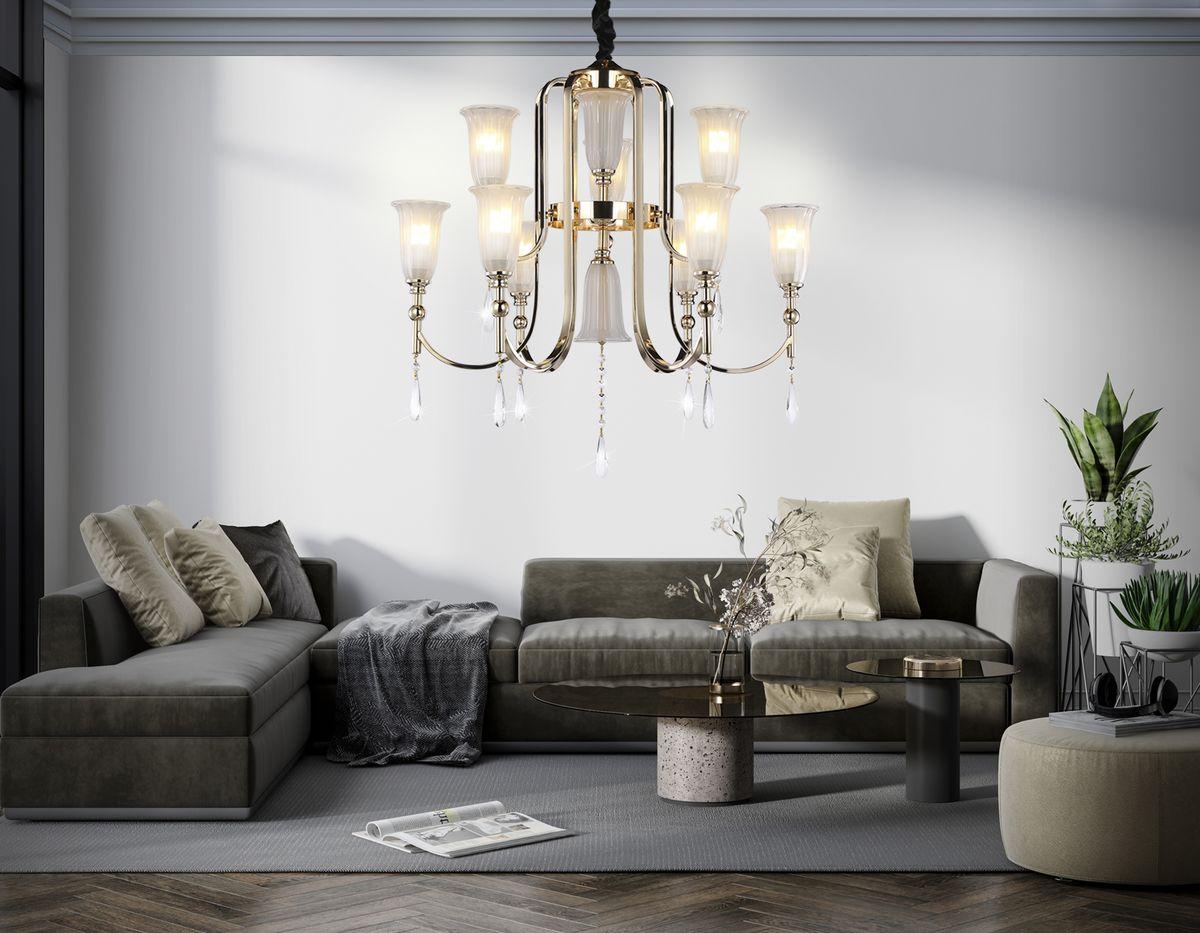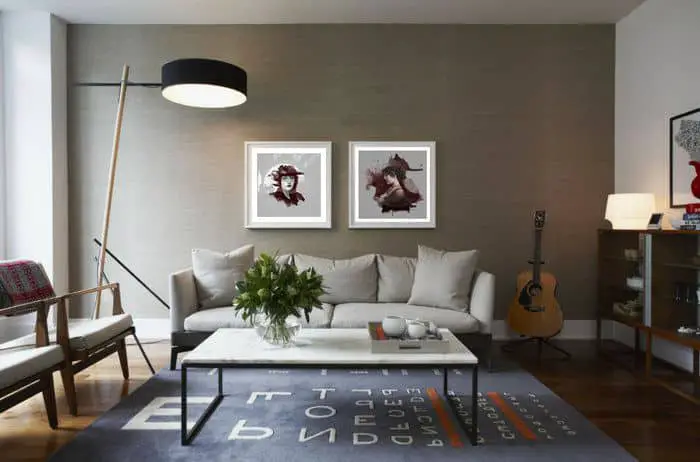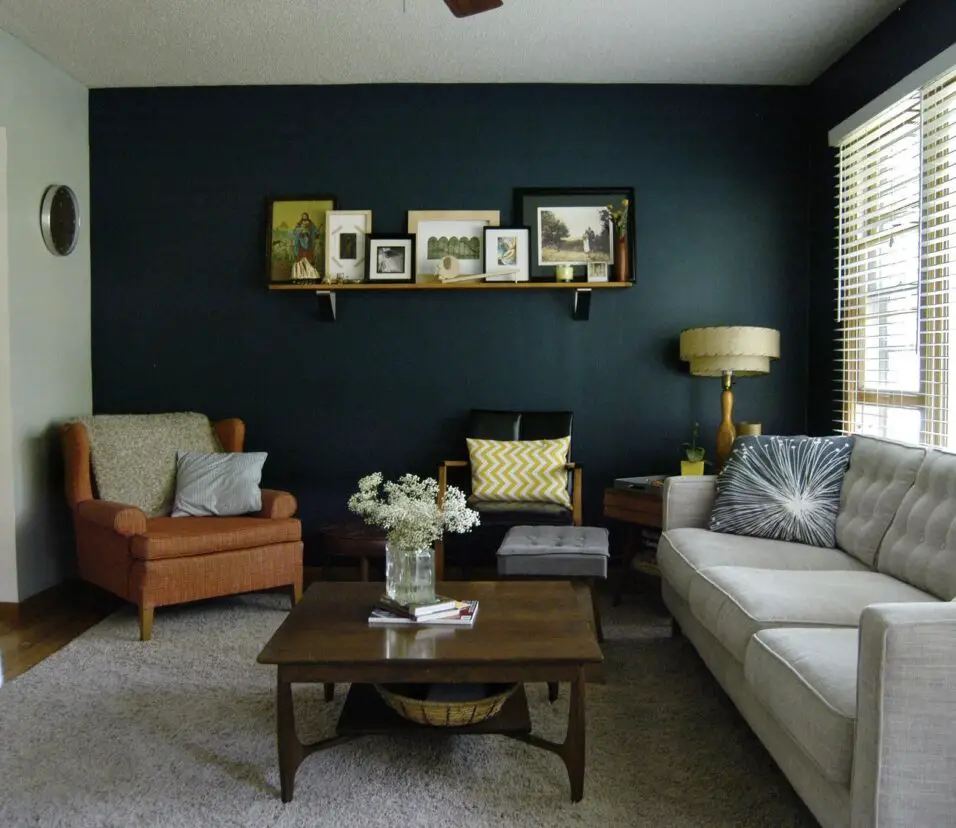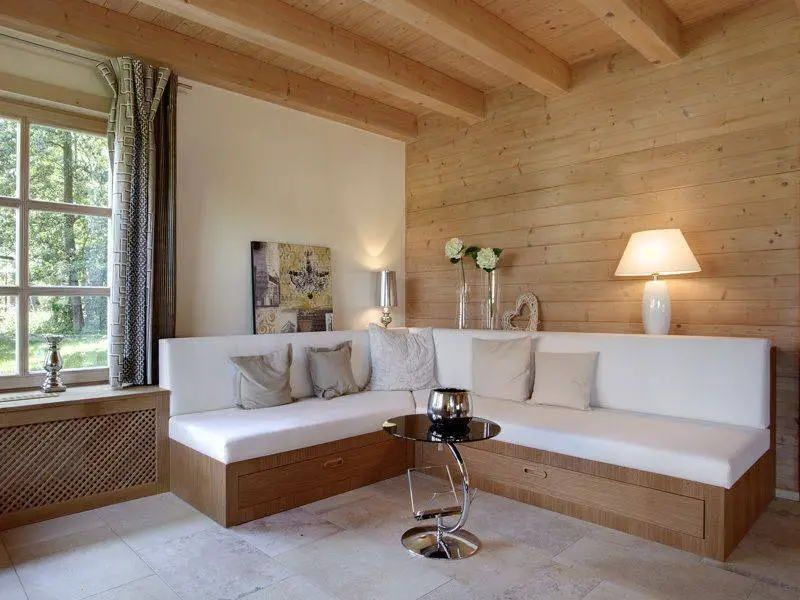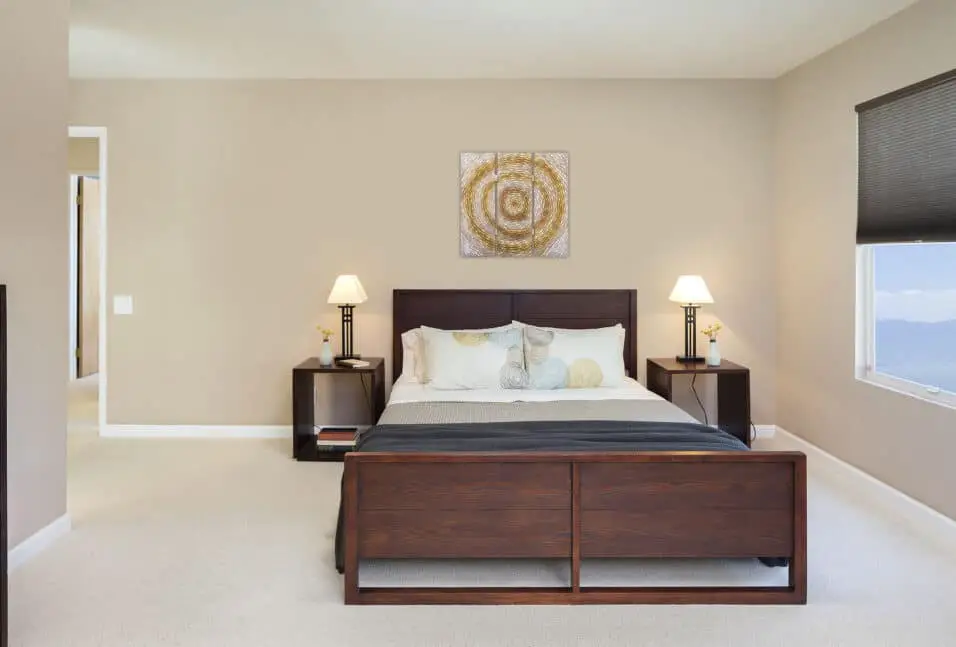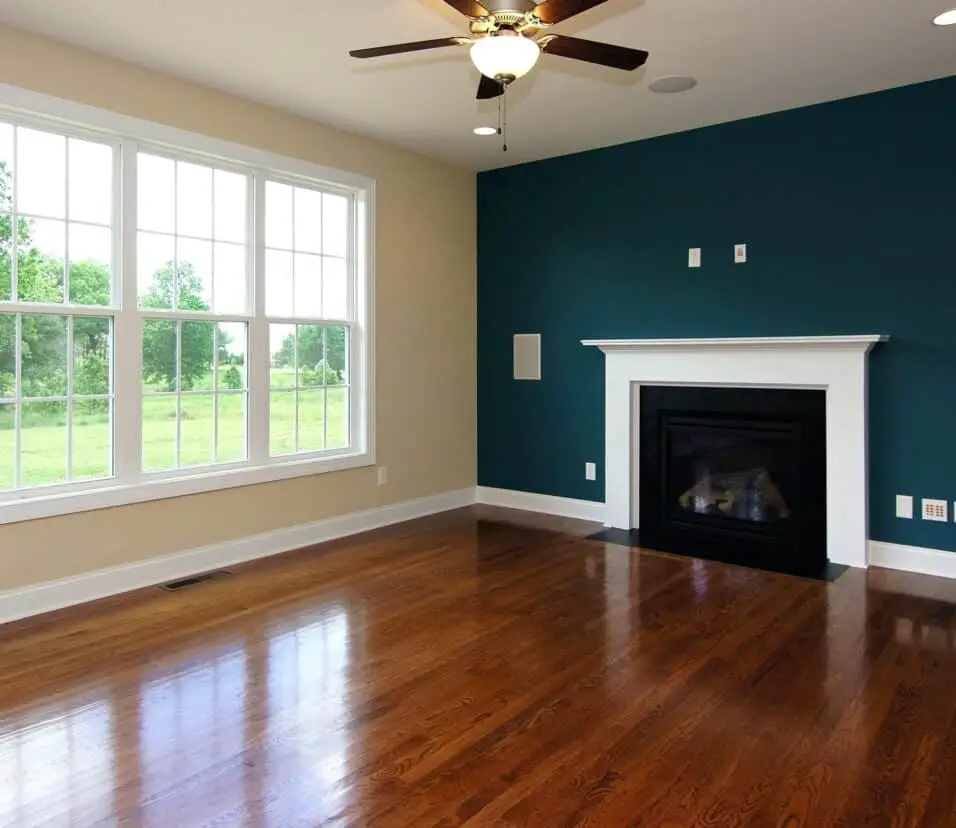How To Make An Accent Wall
Introduction
How To Make An Accent Wall : An accent wall serves as a focal point in a room, drawing attention and creating visual interest. It allows you to experiment with different colors, patterns, and textures, without overwhelming the entire space.
Before diving into the process, it’s important to choose the right wall for your accent Wall. Typically, the wall you select should be the one that naturally catches the eye when entering the room. By identifying the focal point of the room, you can ensure that your accent wall has the maximum impact.
Once you have chosen the wall, it’s time to decide on the design for your accent wall. There are numerous options to consider, ranging from a simple coat of paint in a contrasting color to more intricate techniques such as wallpaper, stenciling, or even reclaimed wood paneling. The design you choose should complement the overall theme and style of the room while reflecting your personal taste and preferences.
By following these instructions, you will be well on your way to creating a stunning accent wall that adds character and charm to your living space. So, let’s get started and transform your room into a visual masterpiece!
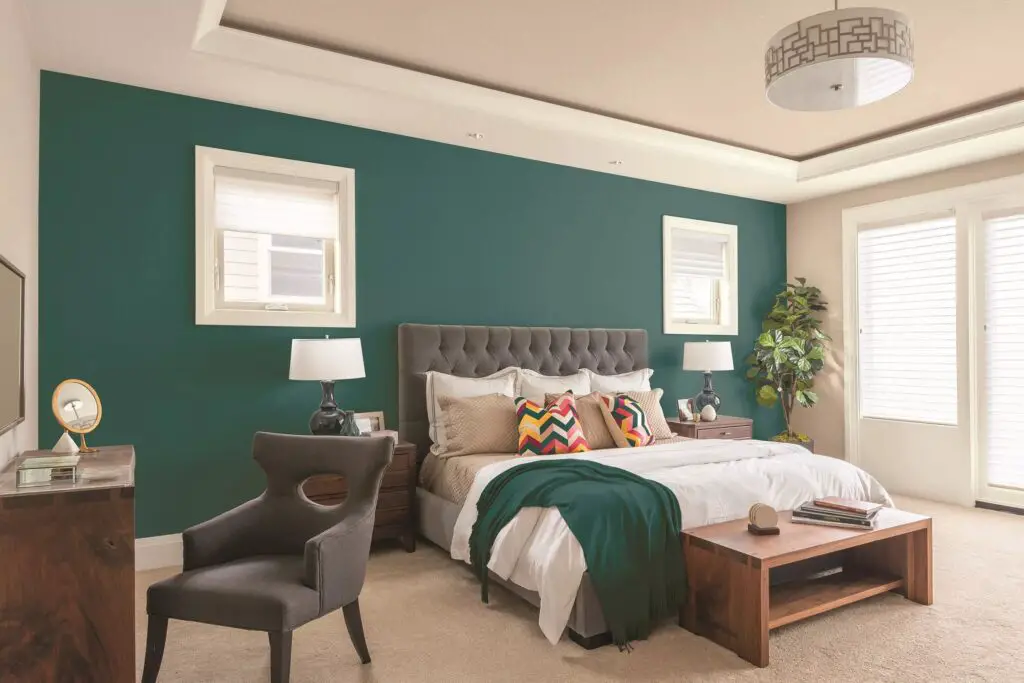
What is the rule for accent walls?
Go with a color that is darker than the other walls in the room. A darker hue will contrast with the lighter walls and pull eyes straight to it, which is what you want. A good rule of thumb is to paint the accent wall the same color as the other walls, but 2 shades darker.
One of the main rules for accent walls is to choose the right wall to highlight. Typically, the wall that is directly opposite the entrance or the wall behind the main furniture piece, such as a bed or a sofa, is selected as the accent wall. This placement ensures that the accent wall immediately catches the attention of anyone entering the room and becomes the focal point of the space. It also helps to create a sense of balance and harmony within the room.
In addition to color, patterns and textures can also be used to create an accent wall. Wallpaper, stencils, or textured paint can be applied to the chosen wall to add visual interest and depth. These elements can introduce patterns, such as stripes, geometric shapes, or floral motifs, which can further enhance the overall design scheme of the room. It is important to ensure that the patterns and textures chosen for the accent wall complement the existing decor and do not overwhelm the space.
How to build a cheap accent wall?
Pick a Paint Color
Creating a stunning accent wall can take little more than a gallon of paint and an afternoon of painting. Choosing the right accent wall paint color is important as it will become your room’s focal point. If your existing wall color is warm, you’ll want to choose a warm wall color.
Choosing the Right Materials:
The first step in building a cheap accent wall is to choose the right materials. Opting for affordable yet visually appealing materials is key to keeping the cost low. One option is to use reclaimed wood, which can be sourced from old pallets or salvaged from construction sites. Not only is reclaimed wood cost-effective, but it also adds a rustic and unique charm to your accent wall. Another budget-friendly option is to use peel-and-stick wallpaper.
Preparing the Wall:
Before you start building your accent wall, it’s important to properly prepare the wall surface. Begin by removing any existing wallpaper or paint and ensuring that the wall is clean and smooth. Fill in any holes or imperfections with spackle and sand the surface until it’s even. This will provide a solid foundation for your accent wall and ensure a professional-looking finish.
Measuring and Marking:
Next, measure the dimensions of the wall and mark the area where the accent wall will be installed. Use a level and a pencil to create straight and even lines. This step is crucial to ensure that your accent wall is symmetrical and visually appealing. Take your time during this process to avoid any mistakes that may be difficult to correct later on.
Installing the Materials:
Once the wall is prepared and marked, it’s time to start installing the materials. For peel-and-stick wallpaper, carefully follow the manufacturer’s instructions to ensure proper installation. Take your time and pay attention to detail to achieve a seamless and professional-looking accent wall.
By following these instructions, you can easily build a cheap accent wall that adds character and style to your room. Remember to choose affordable materials, properly prepare the wall, measure and mark accurately, and install the materials with care. With a little creativity and attention to detail, you can transform any space into a visually stunning masterpiece.
What color to make an accent wall?
Black, Green and Cloudy Gray
Infuse texture into your bedroom or living room with a brick accent wall. Black bricks complement other neutral tones like white or grey—allowing colors like green to fully pop with personality.
Factors to consider:
One of the key factors to consider when deciding on the color for an accent wall is the room’s purpose. Different colors evoke different emotions and moods, so it’s essential to choose a shade that aligns with the intended atmosphere.
Another important consideration is the existing color scheme of the room.
It’s crucial to select a color that complements the surrounding walls, furniture, and decor. If the room already has a dominant color, choosing a contrasting shade for the accent wall can create a visually appealing contrast. For instance, if the room features neutral tones like beige or gray, a deep navy blue or a rich burgundy can make a striking statement. Alternatively, if the room has a vibrant color scheme, opting for a slightly lighter or darker shade of one of the existing colors can create a cohesive and harmonious look.
Personal preferences also play a significant role in choosing the color for an accent wall.
Ultimately, it’s essential to select a color that resonates with your personal style and preferences. Consider the colors that you are naturally drawn to and that make you feel comfortable and happy. If you have a favorite color, incorporating it into the accent wall can be a great way to infuse your personality into the room. Additionally, think about the overall mood you want to create and how different colors can contribute to that ambiance.
What is the best accent color?
- Blue and Sandstone. Set the tone of your family room or bedroom to peaceful.
- Green and Red Brick.
- Black, Green and Cloudy Gray.
- Navy, Brown and Pink.
- Black, White and Pebble Gray.
- Blue and Cream.
- Candy Red and Light Sapphire.
- Dark Clay with Pastel Blue and Pink.
When it comes to choosing an accent color, the decision can be quite subjective and dependent on personal preferences. The best accent color is one that complements the overall design and creates a visually appealing contrast. It should enhance the aesthetic appeal of the space or object it is applied to.
Factors to Consider:
One of the key factors to consider when selecting the best accent color is the purpose it serves. Is it meant to draw attention to a specific element or highlight a particular area? For example, in interior design, an accent color can be used to emphasize a focal point such as a piece of artwork or a unique architectural feature. In this case, a bold and contrasting color like red or yellow can be effective in creating visual interest. On the other hand, if the purpose is to create a calming and soothing atmosphere, softer and more muted colors like pastels or earth tones may be more suitable.
Another important consideration is the mood or emotion that the accent color evokes. Different colors have the ability to evoke different feelings and emotions. For instance, warm colors like red, orange, and yellow are often associated with energy, excitement, and warmth. These colors can be ideal for creating a vibrant and lively atmosphere. On the contrary, cool colors such as blue, green, and purple are known for their calming and relaxing effects. These colors can be used to create a serene and tranquil environment.
What two wall colors go together?
Simple Two-colour Combination for Bedroom Walls
- Indigo and White. Indigo and white have always been a favourite for a soothing bedroom double colour combination.
- Peaches and Cream.
- Creams and Coral.
- Green And Yellow.
- White and Burnt Yellow.
- Brown and Cream.
- Light Brown and Muted Green.
- Brown and Orange.
Choosing the right wall colors for your space can greatly impact the overall aesthetic and ambiance of a room. When it comes to pairing two wall colors together, it is important to consider various factors such as the room’s purpose, natural lighting, existing furniture and decor, and personal preferences. By carefully selecting complementary or contrasting colors, you can create a harmonious and visually appealing environment. In this article, we will explore some popular combinations of wall colors that go well together.
Complementary Colors:
One approach to selecting two wall colors that go together is to choose complementary colors. Complementary colors are hues that are opposite each other on the color wheel. For example, blue and orange, or purple and yellow, are complementary pairs. When used together, these colors create a vibrant and balanced look. To avoid overwhelming the space, it is recommended to use one color as the dominant shade and the other as an accent. For instance, painting three walls in a neutral shade like beige and adding a pop of color with an orange accent wall can create a visually appealing contrast.
Analogous Colors:
Another option for pairing two wall colors is to select analogous colors. Analogous colors are hues that are adjacent to each other on the color wheel. For instance, blue and green, or yellow and orange, are analogous pairs. These colors create a more subtle and harmonious effect compared to complementary colors. When using analogous colors, it is advisable to choose one color as the main shade and the other as a supporting tone. This can be achieved by painting the majority of the walls in a calming blue and adding a touch of green through accent pieces or a feature wall.
Contrasting Colors:
If you prefer a bold and dramatic look, pairing contrasting colors can be an excellent choice. Contrasting colors are those that are far apart on the color wheel, such as red and green, or purple and yellow. This combination creates a striking visual impact and adds a sense of energy to the room. To balance the intensity, it is recommended to use one color as the primary shade and the other as an accent. For example, painting the walls in a deep purple and incorporating pops of yellow through accessories or artwork can create a captivating and dynamic space.
Neutral Colors:
For a more understated and timeless look, pairing neutral colors is a popular choice. Neutral colors include shades of white, beige, gray, and brown. These colors create a calming and versatile backdrop that can easily complement any style or decor. When using neutral colors, it is important to consider the undertones to ensure they harmonize well together. For instance, pairing warm beige walls with cool gray accents can create a sophisticated and balanced atmosphere.
An accent wall serves as a focal point in a room, adding visual interest and depth to the space. It is a design technique that involves painting or decorating one wall in a different color or pattern than the rest of the walls in the room. The purpose of creating an accent wall is to create a sense of drama, highlight architectural features, or bring attention to a particular area or object in the room.
What materials are needed to create an accent wall?
When it comes to creating an accent wall, there are several materials that you will need to bring your vision to life. The choice of materials largely depends on the desired look and feel you want to achieve. One popular option is to use paint, which is a versatile and cost-effective choice. With a wide range of colors available, you can easily find one that complements your existing decor. Additionally, paint allows for various techniques such as color blocking or ombre effects, giving you the freedom to get creative.
Another material commonly used for accent walls is wallpaper. With endless patterns, textures, and designs to choose from, wallpaper can instantly add depth and visual interest to any space. It is important to properly measure and prepare the wall surface before applying wallpaper to ensure a smooth and seamless finish. Additionally, adhesive and a wallpaper smoothing tool are essential for a successful installation.
If you prefer a more natural and rustic look, consider using reclaimed wood or stone veneer. These materials can add warmth and texture to your accent wall, creating a focal point in the room. Reclaimed wood panels are typically easy to install and can be arranged in various patterns, such as horizontal or vertical planks. Stone veneer, on the other hand, requires more expertise and may involve professional installation.
How can one choose the best location for an accent wall?
Choosing the best location for an accent wall is crucial to ensure that it enhances the overall aesthetics of the space. There are several factors to consider when determining the ideal spot for an accent wall. Firstly, it is important to assess the purpose of the accent wall. Is it meant to create a focal point, highlight a specific architectural feature, or add depth to the room? Understanding the objective will help in selecting the most suitable location.
Color psychology plays a significant role in choosing the right wall for accentuating. Consider the mood and atmosphere you want to create in the room. For instance, if you desire a cozy and intimate ambiance, opt for a wall in warm tones like deep red or earthy brown. On the other hand, if you want to create a vibrant and energetic space, go for bold and bright colors like yellow or orange.
Another important consideration is the visual impact of the accent wall. Typically, it is recommended to choose a wall that naturally draws attention, such as the one behind the bed in a bedroom or the wall facing the entrance in a living room. These locations ensure that the accent wall becomes the focal point of the room and immediately captures the attention of anyone entering the space.
What are some popular techniques or designs for accent walls?
When it comes to creating an accent wall, there are numerous techniques and designs that can add a touch of style and personality to any space. One popular technique is using bold and vibrant colors to make a statement. By choosing a contrasting color to the rest of the room, such as a deep navy blue against a neutral backdrop, the accent wall instantly becomes the focal point of the room.
Another popular design for accent walls is the use of wallpaper. With endless options available, from intricate patterns to textured finishes, wallpaper can add depth and visual interest to a space. Whether you opt for a subtle design or a bold print, wallpaper can transform a plain wall into a stunning feature.
In addition to color and wallpaper, texture is another technique that can be used to create an eye-catching accent wall. Materials such as reclaimed wood, stone, or even faux brick can add a rustic or industrial touch to a room. These textured walls not only provide visual interest but also create a sense of warmth and coziness.
What are some popular techniques or designs for accent walls?
When it comes to creating an accent wall, there are numerous techniques and designs that can add a touch of style and personality to any space. One popular technique is using bold and vibrant colors to create a focal point in the room. By choosing a color that contrasts with the rest of the walls, such as a deep navy blue against light gray walls, you can instantly draw attention to the accent wall and create a visually striking effect.
Another popular design for accent walls is the use of wallpaper. With endless options available, wallpaper can add texture, pattern, and visual interest to a room. Whether you opt for a subtle geometric pattern or a bold floral design, wallpaper can transform a plain wall into a stunning feature.
Additionally, incorporating different materials into an accent wall can create a unique and eye-catching design. For example, using reclaimed wood panels or stone veneer can add a rustic and natural element to the space. These materials not only provide visual appeal but also add texture and depth to the wall.
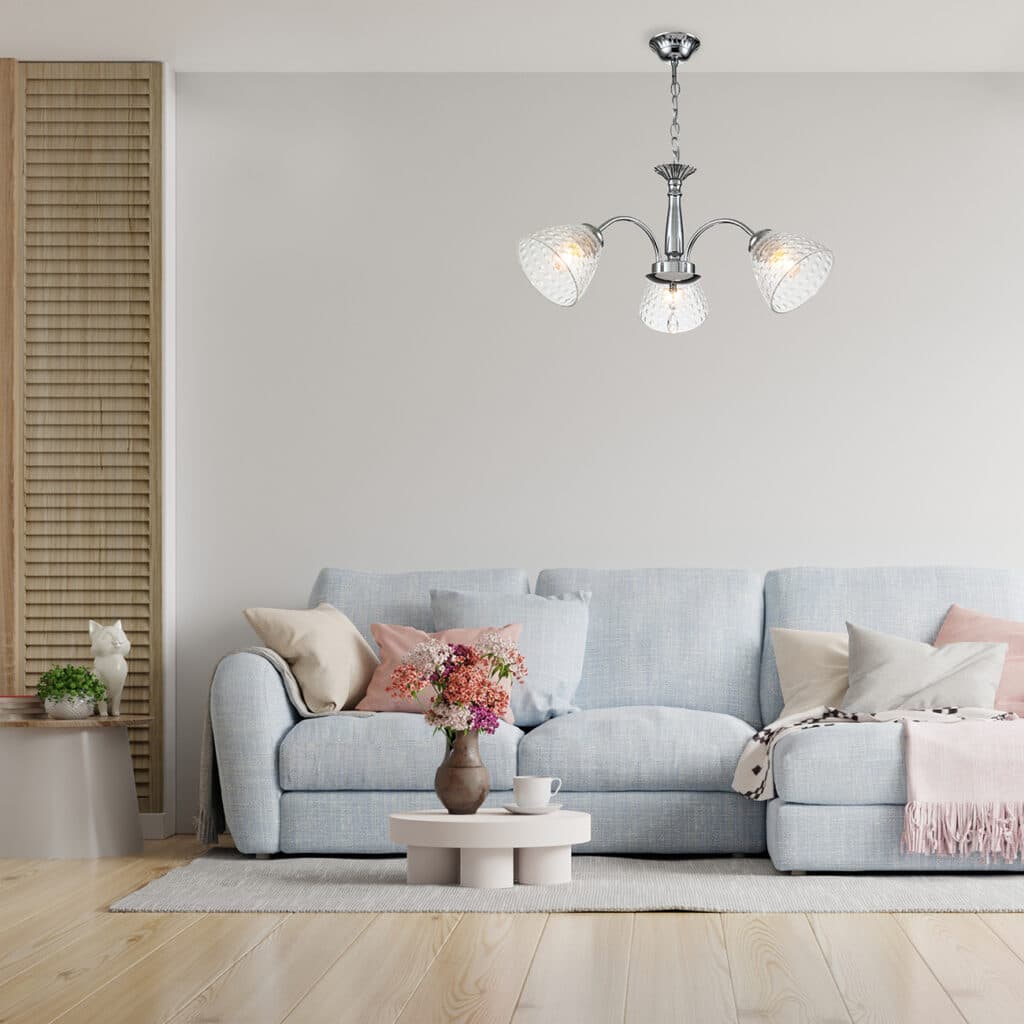
Conclusion
Creating an accent wall is a fantastic way to add a touch of personality and style to any room. Furthermore, an accent wall can also serve a practical purpose. By drawing attention to these elements, you can create a sense of balance and harmony within the space.
Lastly, creating an stunning accent wall is a relatively simple and cost-effective way to update the look of a room. Compared to other renovation projects, such as installing new flooring or replacing furniture, making an accent wall requires minimal time, effort, and resources. With just a few basic tools and materials, you can transform a plain and ordinary room into a stunning and captivating space. Whether you are a seasoned DIY enthusiast or a beginner, this project is accessible to everyone.
Making an accent wall is a versatile and rewarding project that can elevate the style and ambiance of any room. It allows you to unleash your creativity, highlight key features, and update the look of your space without breaking the bank. So, why wait? Follow the instructions provided and embark on the journey of creating a captivating accent wall that will leave a lasting impression on all who enter your home.



